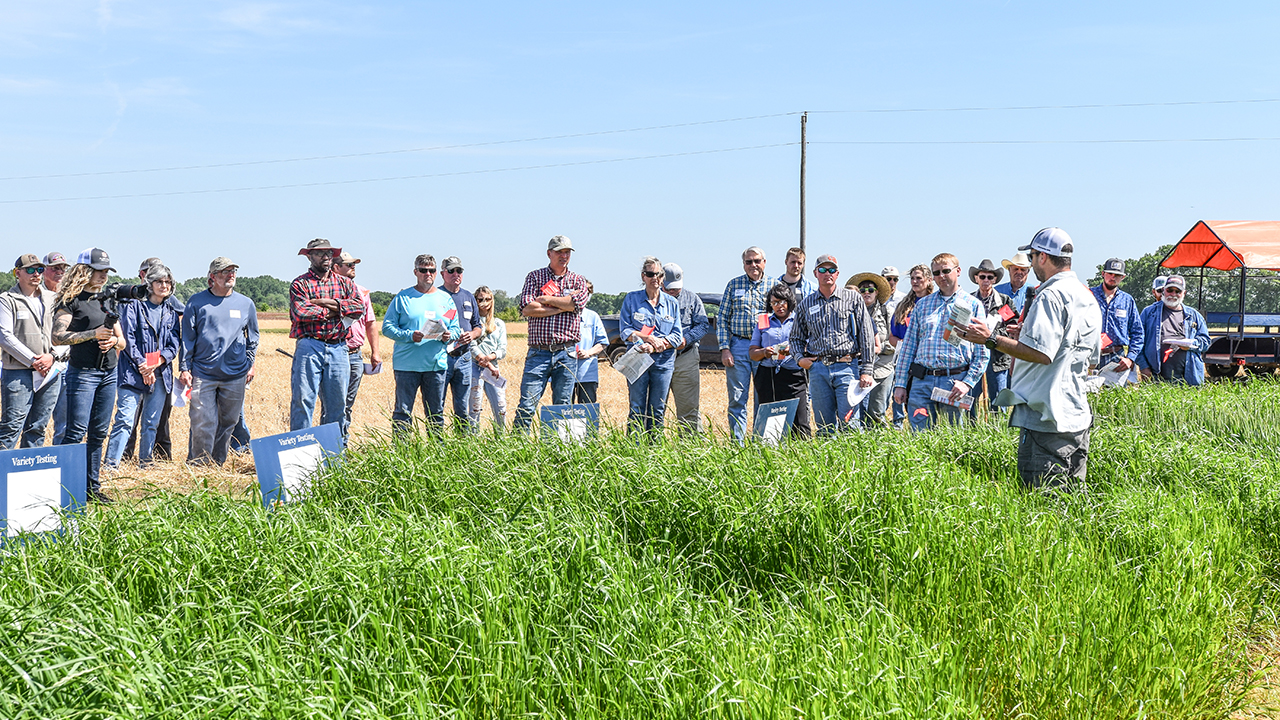Auburn University
Variety Testing Program

Variety selection is the most important decision a farmer can make. If farmers want to be successful, they must ensure that they plant varieties that are well adapted. If a farmer selects the wrong variety, the results can be catastrophic. Typically, farmers do not have the resources to conduct variety trials in addition to their normal growing season activities.
Variety evaluation is also critical to plant breeders, both from universities and industry. Prior to releasing a new variety, these breeders typically evaluate their lines in independent variety trials. This ensures that they have unbiased data from multiple years and locations to support the release of their new variety.
The mission of the Auburn University Variety Testing Program is to provide research-based, unbiased results on the performance of various crop hybrids, cultivars, and varieties to the agricultural community in Alabama. We are intent on conducting these trials in a manner that will result in maximum biological yield through methods common to the top-producing farms in Alabama.
We are committed to providing this information in a timely manner for its use during the decision-making process. The success of the program rests on our ability to help Alabama producers provide a safe, dependable source of food and fiber for all families as well as an economic sustainability for theirs.

Henry Jordan
Variety Testing Manager, Research Associate IV
Subscribe to AU Variety Testing Updates
Annually, the Auburn University Variety Testing Program conducts trials on corn, cotton, soybeans, peanuts, grain sorghum, wheat, barley, oats, triticale, small grain forages, and ryegrass.
Trials are conducted on Auburn University owned and operated agricultural research stations across the major geographical regions of the state. The research conducted at each of these locations can provide stakeholders with data that can be more representative of their growing conditions.
Results of experiments on cotton in Alabama 1899
VARIETIES OF COTTONBY J. F. DUGGAR.PURPOSES OF TESTS OF VARIETIES.Variety tests of cotton have had a prominent place at nearly every experiment station in the Cotton Belt.Although these experiments have had some value, yet they do not afford a concise answer to the...
Experiments with oats 1898
BY J. F. DUGGAR. SUMMARY.Among a number of varieties of oats tested none was found superior in yield to the common Red Rust Proof oat. Varieties which produced moderate yields of grains and relatively large ampunts of tall fine straw were Myer's Turf and Hatchett's...
Experiments with cotton, 1898
BY J. F. DUGGAR. SUMMARY.The growing season of 1898 was extremely dry until June 12, which was unfavorable to securing full effects from fertilizers. Of fourteen varieties of cotton tested in 1898, the largest yield was made by Russell Big Boll, 382 pounds of lint...
Experiments with corn 1897
BY J. F. DUGGAR. SUMMARY.Seed corn from Illinois gave a slightly larger yield than seed corn grown in the South. In 1897 the most productive varieties were Mosby Prolific, Cocke Prolific and Renfro. Kernels from the middle portion of the ear used as seed failed to...
Experiments with cotton 1897
BY J. F. DUGGAR.SUMMARY.The group of varieties yielding most lint were Texas Oak, Griffin, Hawkins, Deering, Mell Cross No. 15, Jones Re-improved, Duncan, Hutchinson, Peterkin, Truitt and Whatley. Seed of the same original stock, but grown for one year in different...
Experiments with foreign cotton 1896
P. H. MELL..Within recent years much attention has been attracted to foreign cottons, especially those of India and Egypt, because of the yearly increased importation of the staple into this country. It is claimed by a few experts that the fibre, in some respects, is...
